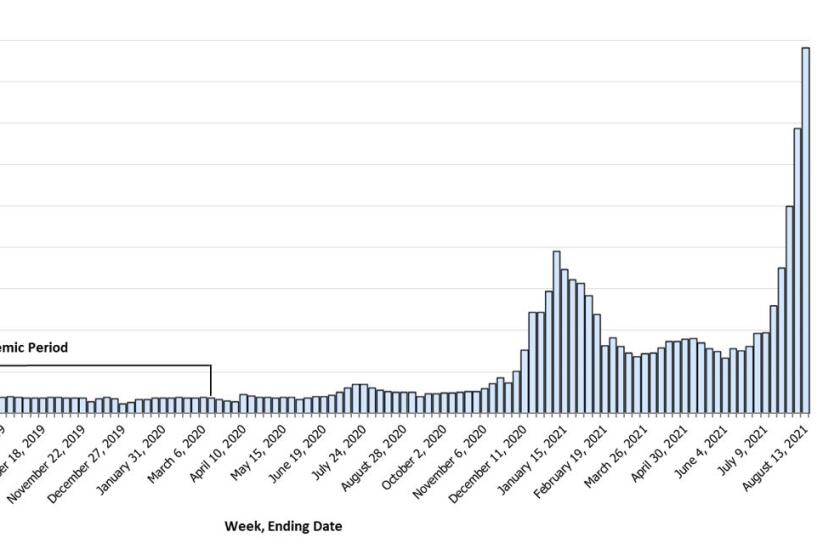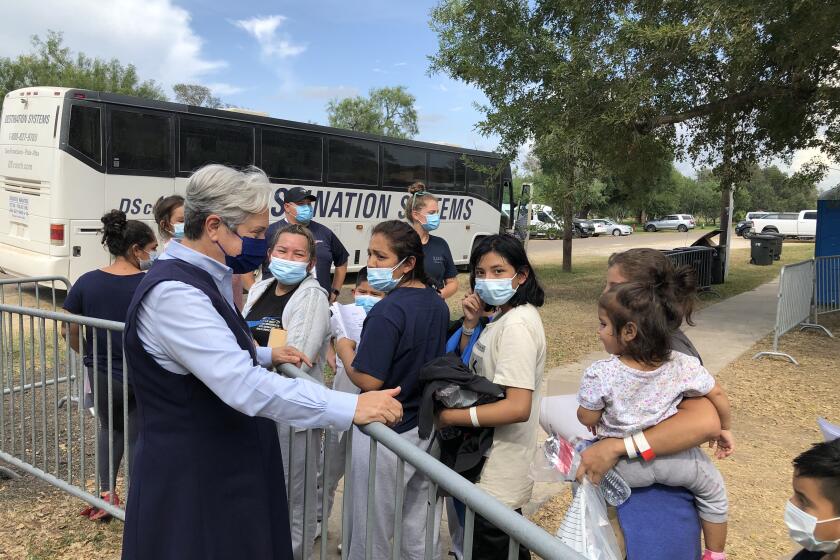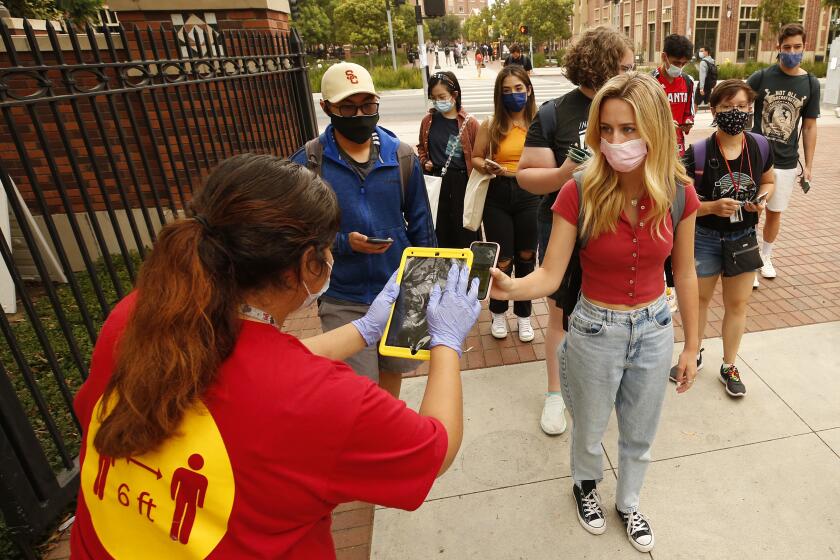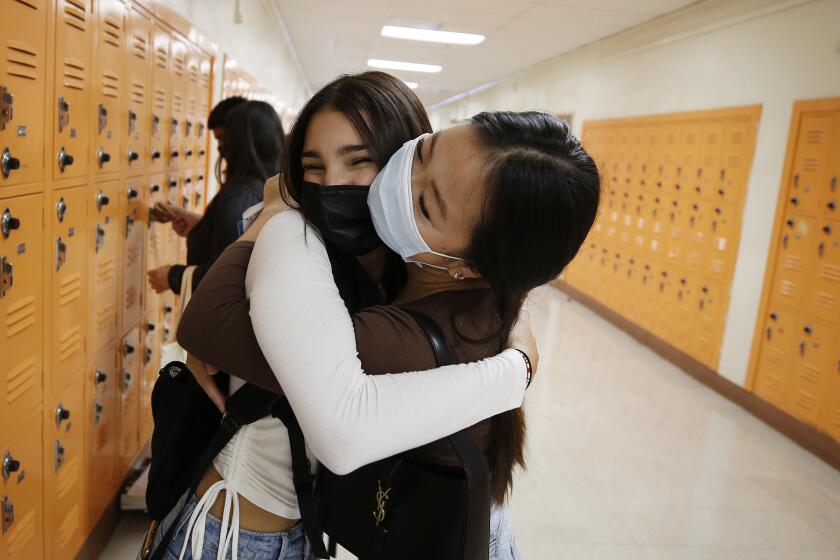California sees progress in coronavirus fight compared with Texas, Florida, other states
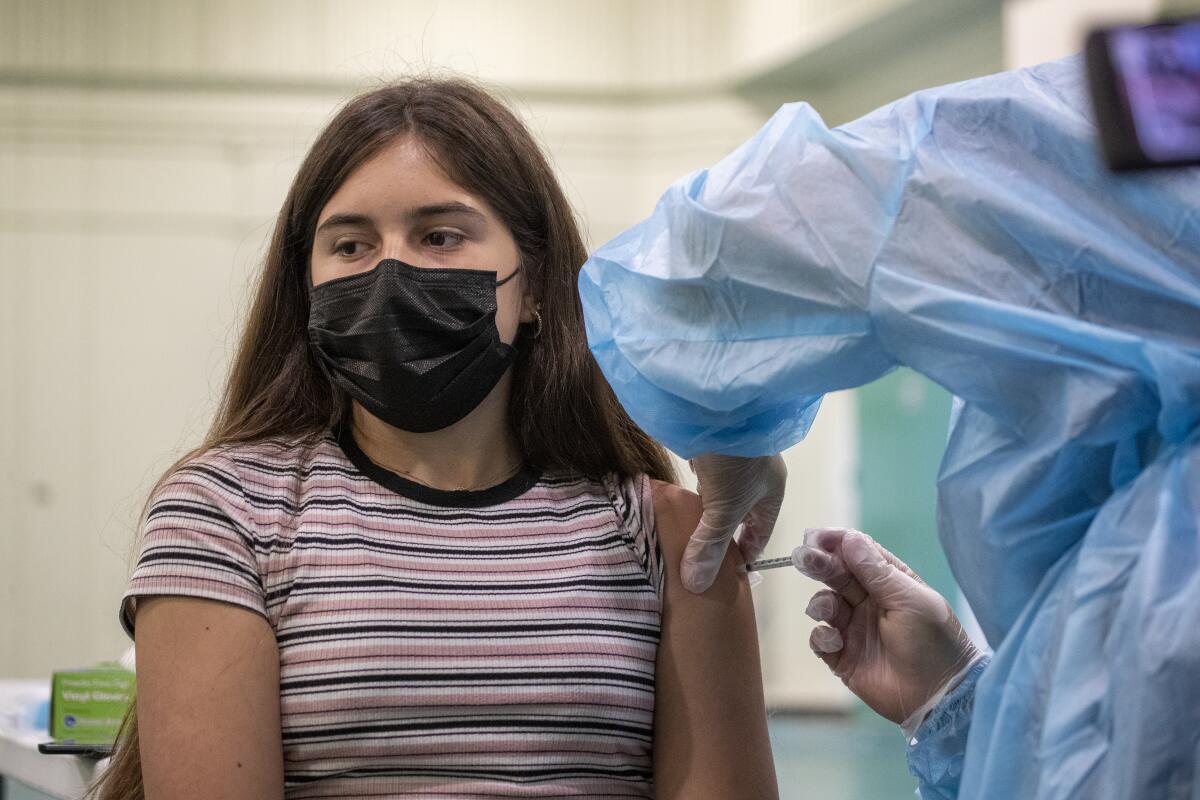
- Share via
California is seeing some positive signs in the fight against the latest coronavirus surge fueled by the highly contagious Delta variant.
Vaccinations are increasing steadily, test positivity rates are falling and the number of people hospitalized with COVID-19 has flattened as of late.
Still, numbers of newly confirmed cases remain high overall, meaning the ripple effects of the wave will be felt for weeks to come. And officials say there are other concerns on the horizon.
Here is a breakdown:
The rate of vaccinated is encouraging, but concerns remain: thousands remain hospitalized, and about 89 people are still dying of COVID each day.
Slowing infections
California has seen a steady drop in its test positivity rate, which reflects the percentage of tests that result in confirmed coronavirus infections.
As of Tuesday, California’s seven-day positivity rate was 4.6%, down from 5.8% two weeks ago.
By contrast, the nation’s second-most populous state, Texas, has a test positivity rate of 16%, according to Johns Hopkins University.
“I don’t think it’s any surprise that we have among the lowest positivity rates in America, as we have the highest vaccination rates in America,” Gov. Gavin Newsom told reporters, although he added there was more work to do to increase vaccinations in populations with lower rates, such as among Black and Latino Californians.
The test positivity rate, public health officials say, is a useful measure of coronavirus spread. Because the raw number of cases can vary depending on how much testing is going on — and testing has ramped up dramatically since California schools reopened — a stable or declining positivity rate can demonstrate slowing transmission.
Despite warnings about ivermectin, pharmacies by early August were dispensing more than 88,000 prescriptions a week, the CDC said.
Cases still a worry
Over the seven-day period ending Tuesday evening, California reported an average of 13,908 new coronavirus cases per day, according to data compiled by The Times. That’s nearly a 5% decrease from a week ago.
The current caseload, however, is still troublingly high. As of June 15, when California reopened its economy and lifted virtually all coronavirus-related restrictions on businesses and public spaces, the state was recording fewer than 900 total cases per day, on average.
And more new cases, officials and experts say, will almost certainly lead to more COVID-19 hospitalizations and, eventually, deaths down the line.
“This virus does continue to cause serious, life-threatening illness among many who are infected,” said Los Angeles County Public Health Director Barbara Ferrer. “And our losses are made all the more tragic by the fact that nearly all of them are preventable with extremely safe and widely available vaccines.”
COVID-19 hospitalizations have increased across the Rio Grande Valley this summer, leaving hospitals unable to hire nurses fast enough.
Hospitalizations slow
Although COVID-19 hospitalizations have somewhat plateaued recently, healthcare systems across the state are still contending with a sustained high level of patients.
Statewide, 8,342 COVID-19 patients were hospitalized on Monday. That’s up just 1% from the previous week, a big improvement from the previous week-over-week increase, which was 11%.
Still, more coronavirus-positive patients are hospitalized now than at any point during last year’s summer surge.
ICUs still busy
California’s intensive care units, however, are still seeing a modest increase in COVID-19 patients, according to Newsom. On Monday, 2,128 COVID-19 patients were in ICUs statewide, a number not seen since mid-February.
Although state figures show roughly 1,700 ICU beds remain available, those are not distributed evenly throughout California. More remote, rural areas might only have access to a handful of ICU beds to begin with, and every one that’s filled by a COVID-19 patient is one that’s not available for other medical emergencies.
In August, nine Northern California counties saw more patients hospitalized with COVID-19 than at any other point in the pandemic: Amador, Del Norte, Humboldt, Lake, Mendocino, Placer, Plumas, Shasta and Tuolumne.
Cal State universities, USC and two UC undergraduate campuses start classes this week — a chance to see whether vaccines, masks and regular testing can minimize spread of the Delta variant.
Fatalities a concern
Fatalities, the ultimate consequence of increases in coronavirus transmission, have also risen sharply recently. Over the week ending Tuesday, an average of 85 people statewide died from COVID-19 each day — a nearly 77% rise from two weeks ago.
The pandemic has now killed nearly 65,300 Californians.
Vaccinations hit milestone
Amid the ongoing surge, health officials and experts have routinely emphasized that the surest way to beat back the coronavirus is to get as many people vaccinated as possible.
More than 80% of eligible Californians have now received at least one dose of COVID-19 vaccine.
That level of vaccine coverage among residents 12 and older ranks ninth out of all states, according to data from the U.S. Centers for Disease Control and Prevention.
California’s partial-inoculation share of 80.6% outpaces the rates in Pennsylvania, at 80%; New York, 78%; Florida, 73.1%; and Texas, 68.6%. States with even higher rates are mostly in New England, along with Hawaii and New Mexico.
Students across California are returning to a very different school experience. Here are answers to common questions about vaccines, testing, masks and more.
Vaccination gaps a worry
Despite California’s relatively robust overall level of vaccine coverage, sizable gaps persist.
Only about half of Black and Latino Californians are at least partially vaccinated, compared with 61% of white residents, 63% of Native Americans and 75% of Asian or Pacific Islander residents, according to data compiled by The Times, though these numbers are an undercount because the race of about 15.3% of people who have been vaccinated is unknown.
More to Read
Sign up for Essential California
The most important California stories and recommendations in your inbox every morning.
You may occasionally receive promotional content from the Los Angeles Times.

